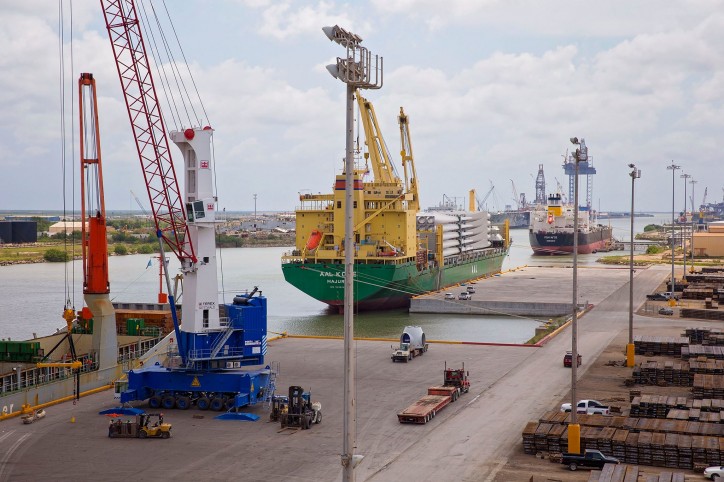President Barack Obama yesterday signed into law the Water Resources and Development Act (WRDA) of 2016, authorizing the Brownsville Ship Channel deepening project, making it eligible for federal funding.
The Brazos Island Harbor Channel Improvement Project was one of 28 water infrastructure projects nationwide included in the WRDA and submitted by the U.S. Army Corps of Engineers (USACE) to Congress for approval. The project calls for the Port of Brownsville channel to be deepened to 52 feet from its current design depth of 42 feet. When complete, the Port of Brownsville will become one of the deepest ports in the Gulf of Mexico.

Image courtesy: Port of Brownsville
“This is the announcement that we were anxiously waiting for and would not have been made possible without the support from our legislative delegation in Washington, D.C., Senator Ted Cruz, Senator John Cornyn, and Congressman Filemon Vela. Their efforts were instrumental in moving this project forward. We owe them a huge debt of gratitude for their leadership and guidance,” said John Wood, Brownsville Navigation District Chairman. “The deepening of the channel strengthens the port’s infrastructure and increases our global competitiveness. It is a catalyst for greater economic opportunities for our entire Rio Grande Valley.”
In 2006, the Brownsville Navigation District began a feasibility study with the USACE to assess the deepening and widening of the channel. The proposal was approved in November 2014 by the USACE, which stated that the project would result in significant economic advantages for commercial navigation in South Texas. The only step pending in the process was congressional authorization, which was accomplished yesterday.
Completion of the channel deepening is important in allowing existing companies at the port, like Keppel AmFELS, to further expand its services. With a depth of 52 feet, Keppel AmFELS will be able to increase its support in the construction and servicing of offshore and inland oil and gas rigs.
In addition, the port will be able to accommodate deeper draft cargo vessels carrying heavier loads, which translates to a greater economic impact per vessel for the region. It also aligns with the recent expansion of the Panama Canal, allowing newer and bigger ships crossing that stretch to call on the port for business
Source: Port of Brownsville